CALIPSO DEL CALLAO - CECILIA - COVER [ESP - ENG] @geronimamunoz
8
About :
SPANISH
Saludos querida comunidad de Hive Music, en víspera del Carnaval les traigo el tema Cecilia, género Calipso del Callao, Estado Bolívar, fue grabado por la Agrupación Folclórica "CONVENEZUELA", al final les dejo la fuente. Me acompañan Luis Cuevas en el cuatro venezolano, Gabriel Delgado en las Maracas, Tambora: Leonardo Zerpa, @leogergabriel en los coros. Fue realizado durante un ensayo en la Escuela de Música Lino Gallardo a la cual agradezco por el espacio, partiendo de esos encuentros propiciados para proyectar nuestra música tradicional y decidí hacer el video especialmente para nuestra comunidad a través de 3speak, espero sea del agrado de todos, mi usuario @geronimamunoz.
El calipso del Callao, es un género musical de ritmo pausado, cadencioso para mostrar la belleza de la danza y la ejecución de los tambores llamados Bumbac, el canto se hace con estrofas en español o en inglés patois o francés criollo, alternando con algunos coros o estribillos. Ese movimiento de la música invita a bailar y a compartir en las comparsas durante las fiesta de carnaval en el pueblo del Callao, Estado Bolívar, Venezuela.
De acuerdo a algunos antecedentes, El Calipso, comenzó como la música de carnaval de Trinidad y Tobago y nunca se ha desviado de ahí, es música de la calle, comparsas de la gente del pueblo que por ritmo contagioso se ha ido esparciendo por todas las Antillas, por lo cual se le llama ritmo afrocaribeño, muy popular en las Islas del Caribe.
Uno de los cantores y cultor más importantes es el Maestro Costarricense Walter Gravitt Ferguson, quien dedicó parte de su vida a cantar Calipso. Interesante mirar el trabajo elaborado en donde se nombran algunos países donde se canta calipso, tales como: Venezuela, Trinidad y Tobago, Costa Rica en la Provincia del Limón, Jamaica, Colombia, Honduras, Panamá, norte de Brasil, entre otros. Fuente
El origen del Calipso se remonta a la cotidianidad, forma de canto o manera de comunicarse que tenían los esclavos durante las labores fuertes del trabajo en las minas, ellos llegan a Guayana con su cultura africana para plasmar su sabiduría desde las Antillas hasta el Sur de Venezuela, eran esclavos dominados por sus amos para explotar las minas de oro. Desde ese momento, aproximadamente siglo XIX, años 1870 llegaron y crearon sus propios asentamientos y comunidades dando el nombre original al pueblo del Callao hasta el presente.
Con el tiempo, los tambores que trajeron los esclavos fueron transformados en tambores Bumbak, agregando el cuatro venezolano, el rallo, silbatos, campanas y maracas, entre otros elementos indispensables para enriquecer la danza como las Madamas, medio pintos, diablos, mineros, fantasías que durante la llegada de la Fiesta del Carnaval, año tras año se reúnen para ofrecer lo mejor en música tradicional venezolana.
La mayoría de los cantos se hacen en patois que es una mezcla de inglés y francés, se mantiene el crear historias de la vida y del día a día del callaoense, así como los cuentos, historias, sátiras, entre otros que hacen presencia en esta tradición la cual se mantiene en todas las Antillas y llegó a Venezuela para quedarse, pudiendo desarrollar una creatividad única para improvisar calipsos a partir de cualquier tema, en algunas oportunidades haciendo competencias entre los cantores, desde la década aproximada de los años 1950.
En Venezuela existen grupos importantes de proyección del género Calipso tales como: Agrupación Folclórica CONVENEZUELA, Grupo Yuruary, figuras emblemáticas del Calipso en el Callao como Madama Lourdes Basanta, Madama Isidora Agnes, Madama Cleotilde Billings, Lulú Basanta, Miguelina Conde, la Madama blanca, entre otras.

ENGLISH
Greetings dear community of Hive Music, on the eve of Carnival I bring you the theme Cecilia, genre Calypso del Callao, Bolivar State, was recorded by the Folk Group "CONVENEZUELA", at the end I leave the source. I am accompanied by Luis Cuevas on the Venezuelan cuatro, Gabriel Delgado on the Maracas, Tambora: Leonardo Zerpa, @leogergabriel on the chorus. It was made during a rehearsal at the School of Music Lino Gallardo to which I thank for the space, based on these meetings propitiated to project our traditional music and decided to make the video especially for our community through 3speak, I hope it will be to everyone's liking, my user @geronimamunoz.
Calypso from Callao, is a musical genre of slow rhythm, cadenced to show the beauty of the dance and the execution of the drums called Bumbac, the singing is done with stanzas in Spanish or English patois or French Creole, alternating with some choruses or refrains. This music movement invites to dance and share in the comparsas during the carnival festivities in the town of Callao, Bolivar State, Venezuela.
According to some antecedents, Calypso began as the carnival music of Trinidad and Tobago and has never deviated from there, it is music of the street, comparsas of the people of the town that by contagious rhythm has been spreading throughout the Antilles, which is why it is called Afro-Caribbean rhythm, very popular in the Caribbean Islands.
One of the most important singers and cultor is the Costa Rican Master Walter Gravitt Ferguson, who dedicated part of his life to sing Calypso. It is interesting to see the work elaborated in which some countries where calypso is sung are named, such as: Venezuela, Trinidad and Tobago, Costa Rica in the Province of Limón, Jamaica, Colombia, Honduras, Panama, northern Brazil, among others. Source
The origin of Calypso goes back to the daily life, way of singing or way of communicating that the slaves had during the hard work in the mines, they arrive to Guayana with their African culture to express their wisdom from the Antilles to the South of Venezuela, they were slaves dominated by their masters to exploit the gold mines. From that moment, approximately in the XIX century, in 1870, they arrived and created their own settlements and communities, giving the original name to the town of Callao until the present.
Over time, the drums brought by the slaves were transformed into Bumbak drums, adding the Venezuelan cuatro, the rallo, whistles, bells and maracas, among other indispensable elements to enrich the dance as the Madamas, half pintos, devils, miners, fantasies that during the arrival of the Carnival Festival, year after year gather to offer the best in traditional Venezuelan music.
Most of the songs are in patois, which is a mixture of English and French, they keep creating stories of life and the daily life of the callaoense, as well as tales, stories, satires, among others that are present in this tradition which is maintained in all the Antilles and came to Venezuela to stay, being able to develop a unique creativity to improvise calypsos from any topic, sometimes making competitions between singers, since the decade of the 1950.
In Venezuela there are important Calypso groups such as: Agrupación Folclórica CONVENEZUELA, Grupo Yuruary, emblematic figures of Calypso in Callao such as Madama Lourdes Basanta, Madama Isidora Agnes, Madama Cleotilde Billings, Lulú Basanta, Miguelina Conde, la Madama blanca, among others.

CECILIA, Autor: Anónimo
Ay ay ay ay ay Cecilia
ay ay ay ay ay Cecilia
Si ue me me mué
Puma ié mande mama mué (Bis)
Ue sau fe, see what you do
You put Ander your bed
And you make your mako
Cut off my head.
Ue sau fe, see what you do
You put Ander your bed
And you make your mako
Cut off my head.
ay ay ay ay ay Cecilia
ay ay ay ay ay Cecilia
Si ue me me mué
Puma ié mande mama mué (Bis)
Mama mué ce sen lucien
Papa mué ce martincien
Si ue me me mué
Puma ié mande mama mué (Bis)
ay ay ay ay ay Cecilia
ay ay ay ay ay Cecilia
Si ue me me mué
Puma ié mande mama mué (Bis)

LETTER
CECILIA, Author: Anonymous
Ay ay ay ay ay Cecilia
ay ay ay ay ay Cecilia
Si ue me me mué
Puma ié mande mama mué (Bis)
Ue sau fe, see what you do
You put Ander your bed
And you make your mako
Cut off my head.
Ue sau fe, see what you do
You put Ander your bed
And you make your mako
Cut off my head.
ay ay ay ay ay Cecilia
ay ay ay ay ay Cecilia
Si ue me me mué
Puma ié mande mama mué (Bis)
Mama mué ce sen lucien
Papa mué ce martincien
Si ue me me mué
Puma ié mande mama mué (Bis)
ay ay ay ay ay Cecilia
ay ay ay ay ay Cecilia
Si ue me me mué
Puma ié mande mama mué (Bis)

Banner hecho por mí a través de Canva
Video hecho por mi a través de mi equipo Tecno Spark 8C
Editor: CapCut
Banner made by me through Canva
Video made by me through my Tecno Spark 8C equipment.
Publisher: CapCut
Translator: www.Deepl.com
Tags :
Their limit for today is $0!
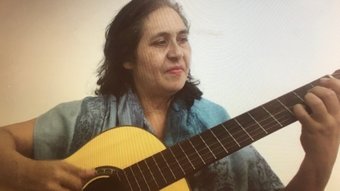
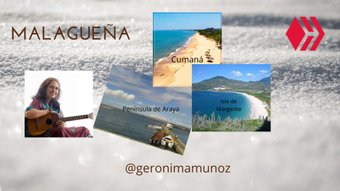
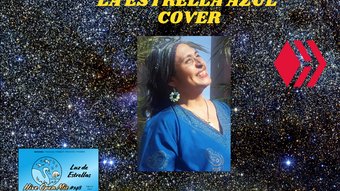

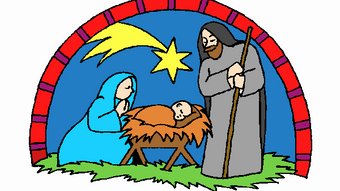



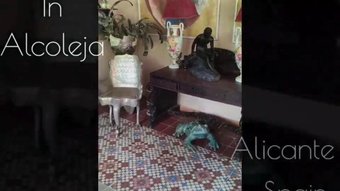
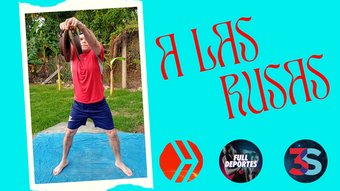






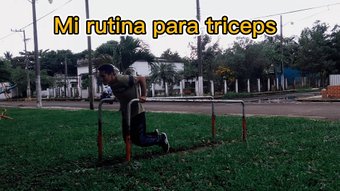
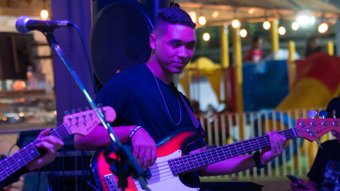
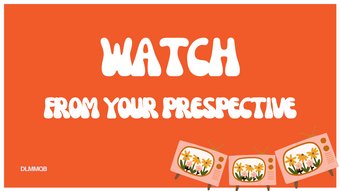
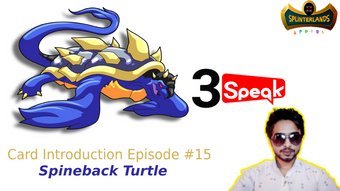
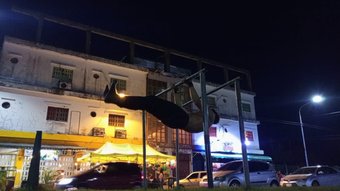


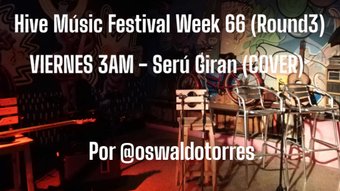

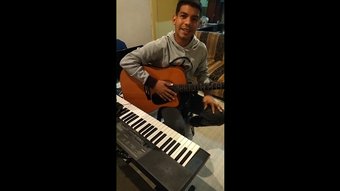

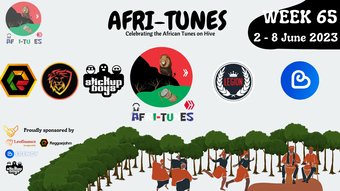

Comments:
Reply:
To comment on this video please connect a HIVE account to your profile: Connect HIVE Account